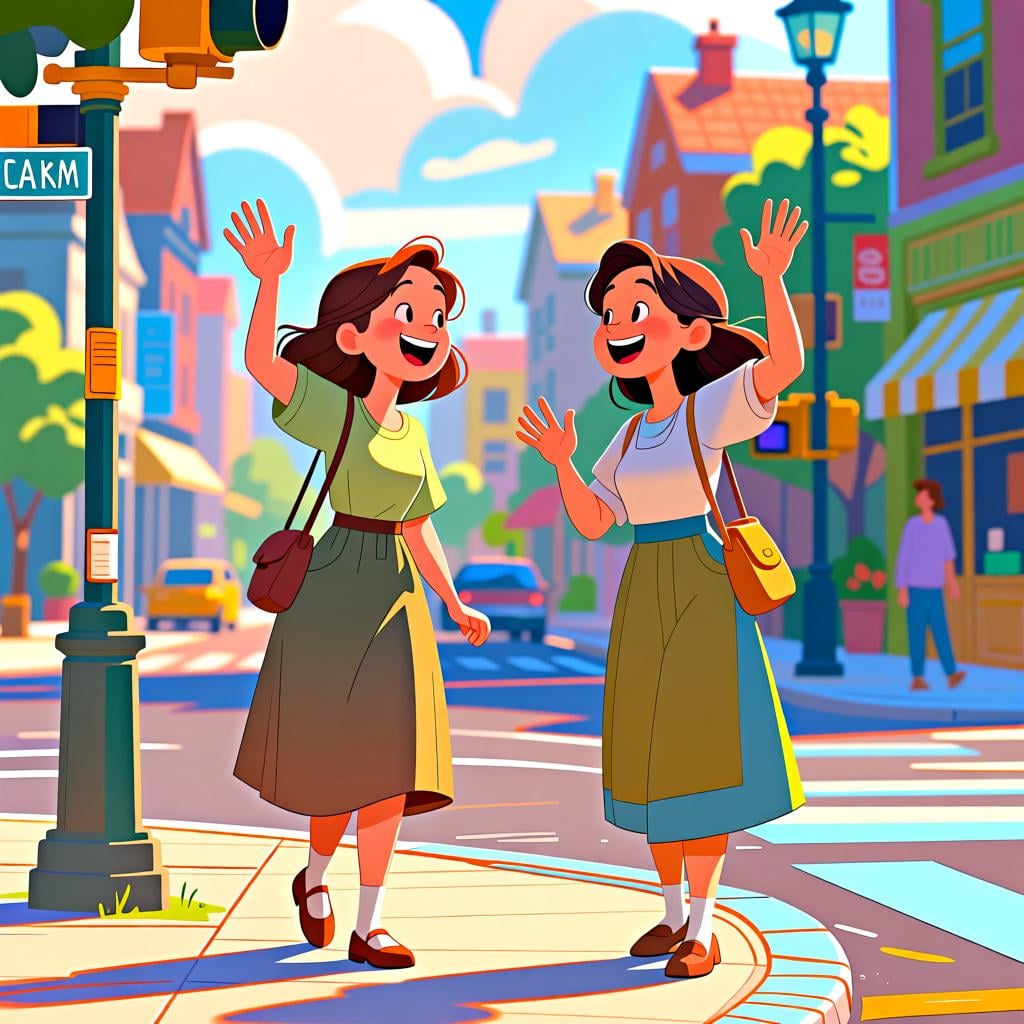buena
/BWEH-nah/
good

Here, 'buena' describes the quality of something, like a 'buena película' (a good movie).
buena(Adjective)
good
?general quality, skillful
fine
?acceptable, satisfactory
,nice
?pleasant, enjoyable
📝 In Action
Es una buena doctora.
A1She is a good doctor.
Compré una falda muy buena y barata.
A2I bought a very good and cheap skirt.
Tiene buena memoria para los nombres.
B1She has a good memory for names.
💡 Grammar Points
Matching the Noun
Adjectives in Spanish change to match the thing they describe. 'Buena' is the form you use for feminine things, like 'una casa buena' (a good house). For masculine things, you'd use 'bueno', like 'un libro bueno' (a good book).
Where Does it Go?
Usually, 'buena' comes after the noun ('una amiga buena'). Placing it before the noun ('una buena amiga') can make it sound a bit more emotional or emphasize a close relationship, like saying 'a dear friend'.
❌ Common Pitfalls
Gender Mix-up
Mistake: "El coche es buena."
Correction: El coche es bueno. 'Coche' is a masculine word, so the adjective needs to be masculine too ('bueno'). 'Buena' is for feminine words like 'la casa'.

'Buena' can also describe a person's character, meaning they are kind and caring.
buena(Adjective)
kind
?describing a person's character
good-natured
?benevolent, gentle
,well-behaved
?describing behavior, especially for children
📝 In Action
Mi abuela es una persona muy buena.
A1My grandmother is a very good/kind person.
Gracias por tu ayuda, eres muy buena.
A2Thanks for your help, you are very kind.
💡 Grammar Points
Use 'Ser' for Character
To say someone is a kind person as part of their personality, always use the verb 'ser'. For example, 'Ella es buena' means 'She is a good person'.

When talking about food, 'buena' often means 'tasty'. Notice we usually use the verb 'estar' for this.
📝 In Action
¡La sopa está muy buena!
A2The soup is very good/tasty!
Esta tarta de manzana está buenísima.
B1This apple pie is delicious.
💡 Grammar Points
Use 'Estar' for Taste
To describe how food tastes right now, use the verb 'estar'. 'La sopa está buena' means this specific soup tastes good. 'La sopa es buena' means soup, in general, is good for you.

People often just say 'Buenas' as a friendly, all-purpose greeting during the day or evening.
buena(Phrase)
hello
?a casual greeting
hi
?informal greeting
,good day / afternoon / evening
?shortened form
📝 In Action
¡Buenas! ¿Qué tal todo?
A1Hi! How's everything?
Buenas noches, que duermas bien.
A1Good night, sleep well.
Buenas tardes, ¿en qué puedo ayudarla?
A2Good afternoon, how can I help you?
💡 Grammar Points
Always Feminine and Plural
This greeting is a shortcut for 'buenas tardes' or 'buenas noches'. Because 'tardes' and 'noches' are feminine and plural, the greeting 'buenas' always ends in '-as'.
⭐ Usage Tips
A Versatile Greeting
You can use 'Buenas' pretty much any time after noon. It's a warm and common way to greet someone in a shop, on the street, or when meeting friends.
✏️ Quick Practice
💡 Quick Quiz: buena
Question 1 of 1
Which sentence uses 'buena' to describe how food tastes?
📚 More Resources
Frequently Asked Questions
Why does it sometimes end in '-o' (bueno) and sometimes in '-a' (buena)?
In Spanish, words have a gender. 'Buena' is used to describe feminine words (like 'la casa' or 'la chica'), and 'bueno' is for masculine words (like 'el libro' or 'el chico'). The adjective has to match!
What's the difference between 'ser buena' and 'estar buena'?
'Ser buena' usually describes a person's character (she *is* a kind person). 'Estar buena' describes a temporary state, like how food tastes (the soup *is* tasty) or someone's health (she *is* well). Be careful, because in many places, 'estar buena' is also informal slang for saying a woman is physically attractive.